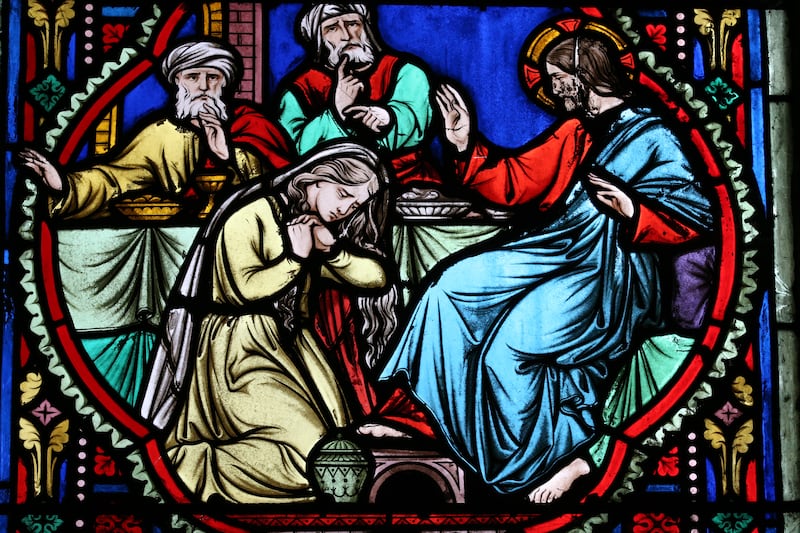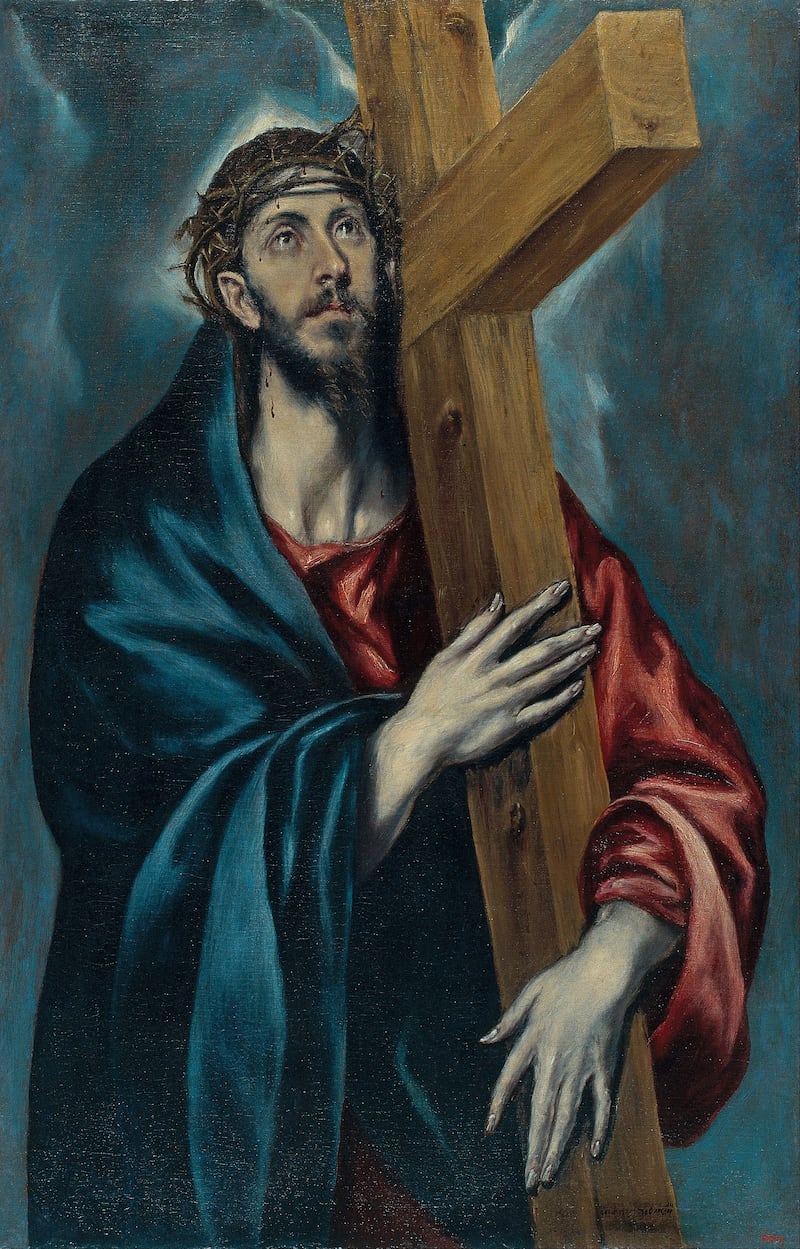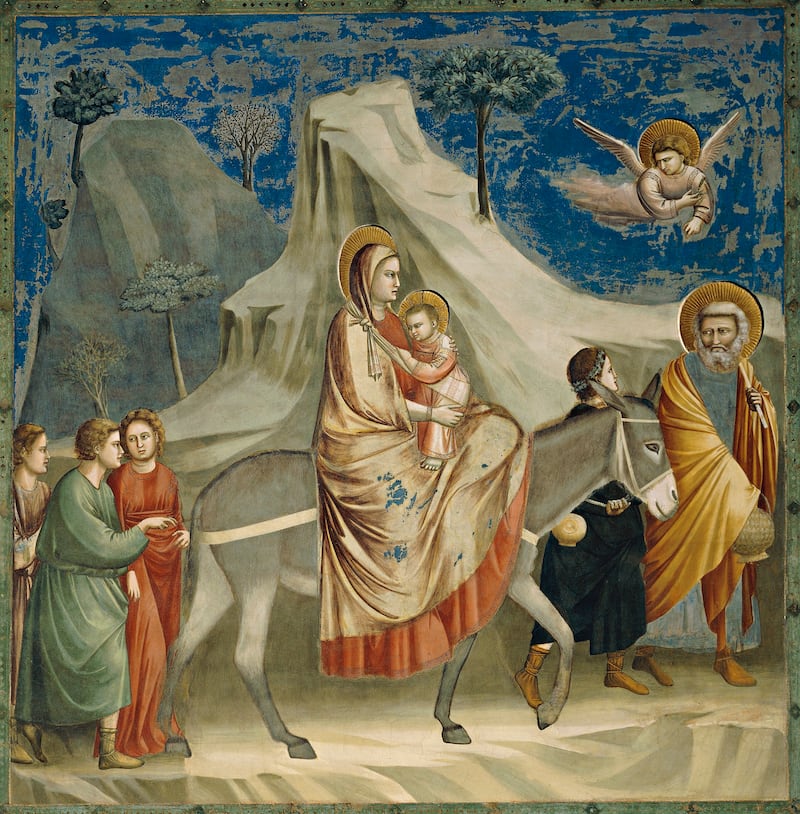“For God so loved the world,” John tells us in 3:16, “that He gave His only begotten Son.” But how would it feel, what would it mean, to discover yourself a divine being made flesh? From Norman Mailer to Anne Rice, Nikos Kazantzakis to Robert Graves, novelists have found the story of Jesus Christ irresistible. Here are 10 of the best.
Ben-Hur: A Tale of the Christ
By Lew Wallace (1880)
You wouldn’t know it from the 1959 movie starring Charlton Heston, which dropped the novel’s subtitle, but Lew Wallace’s tale – dubbed “the most influential Christian book of the 19th century” – offers parallel narratives: that of the Jewish prince Judah Ben-Hur, reduced to a galley slave, and that of his peer Jesus of Nazareth, whose gospel finally offers Ben-Hur the opportunity to reject his revenge mission in favour of peace, love and understanding. Placing Jesus at the heart of a novel, even a novel that was a blend of fiction and religious truth, was a pretty radical departure in 1880. Wallace was scrupulous in his quotations, however, only ever allowing Jesus to speak the words recorded in the King James Bible. Nor do any of his charioteers wear wristwatches.
The Last Temptation
By Nikos Kazantzakis (1955)

As the title suggests, Kazantzakis’s novel is chock-a-block with temptations strewn in Jesus’s path, but it’s the final one, in which Satan finally persuades the crucified Christ that his mission has been accomplished, and that he is now free to step down off the Cross to marry Mary Magdalene and live a normal life, that tends to catch the eye. “Blasphemy!” cried many vested interests, among them the Greek Orthodox Church and the Catholic Church, and this even before they heard Harvey Keitel’s Brooklyn-accented Judas in Martin Scorsese’s 1988 film adaptation. In truth, Kazantzakis – a deeply spiritual man who also wrote a novel about Francis of Assisi – creates a compelling portrayal of a character who is both divine and mortal, and who is equally torn by the demands of both.
The Secret Gospel of Mary Magdalene
By Michèle Roberts (1984)

More blasphemy, this time from a novel that begins with the discovery in Provence of a secret fifth Gospel, which tells the story of Jesus’s life from the perspective of the vilified Mary Magdalene. “I imagined Mary Magdalene as Christ’s lover,” Michèle Roberts wrote, which was scandalous enough, but then she had to go and construct a narrative in which Jesus’s female followers were considered every bit as important as the chaps. Quelle horreur! “I do not want this book to cause outrage,” the narrator tells us near the end of a novel originally titled The Wild Girl, and presumably with her tongue wedged firmly in her cheek, having effectively reinforced the power of Jesus’s spiritual message while deconstructing the patriarchal interpretation of same.
A Deadly American Marriage review: Excruciating documentary gives Jason Corbett’s killers Molly Martens and her father a platform and megaphone
‘Alan Hawe was a wolf in sheep’s clothing who fooled us all’: Clodagh Hawe’s sister on her fight for the truth
Influencer James Kavanagh on life in Kilkenny: ‘I wanted a big house, the fantasy of a big house’
The Gospel According to Jesus Christ
By José Saramago (1991)
The Portuguese author José Saramago derived O Evangelho Segundo Jesus Cristo from canonical gospels in the main but offered a fresh take on Jesus’s thinking. Haunted by survivor’s guilt after Herod’s slaughter of the innocents, and tortured by the idea that God the Father might allow such cruelty in order for his mission to eventually unfold, Saramago’s Jesus is in thrall to horrific nightmares, and experiences considerable doubts about the wisdom of God’s plan and the centuries of torture, martyrdom and misery that his sacrifice will set in train. The Vatican denounced Saramago for possessing “a substantially anti-religious vision”, but the novel is a profound exploration of the psychology of what it might mean to be simultaneously human and divine.
The Gospel According to the Son
By Norman Mailer (1997)
Never a man to hide his opinion under a bushel, Norman Mailer waded into the fray with a novel that tells Jesus’s story from the point of view of Christ himself, a conceit that is bolstered – or undermined, depending on the depth of your faith – by Mailer’s cleaving to the orthodox gospel sources. Not that our Narrator is hidebound by his early biographers: “While I would not say that Mark’s gospel is false,” Jesus tells us, “it has much exaggeration. And I would offer less for Matthew, and for Luke and John, who gave me words I never uttered and described me as gentle when I was pale with rage.” If you’ve ever wondered what it might have been like to look upon the world through Jesus’s eyes, Mailer’s novel is the one for you.
Jesus, the Son of Man
By Kahlil Gibran (1928)

About the only point of view Kahlil Gibran doesn’t offer in Jesus, the Son of Man is that of Christ himself. Instead, Gibran – a Maronite Christian, born in Lebanon and raised in Boston – gives us a bewildering mosaic of perspectives on Jesus’s life that includes those of Caiaphas, Barabbas, Joseph of Arimathea, Pilate’s wife and John the Baptist, a blend of Jewish, Roman and Greek interpretations that delivers the most multifaceted portrayal of Jesus in fiction. Not everyone, of course, is in agreement about Jesus’s motives: “He was of the rabble, a brigand, a mountebank and a self-trumpeter,” Annas the high priest tells us, “and for this He had to go the way of all the tainted and the defiled.” A solid high priest, old Annas, but not, alas, much of a prophet.
The Good Man Jesus and the Scoundrel Christ
By Philip Pullman (2010)
His Dark Materials, indeed. Philip Pullman reimagines Jesus’s story comprehensively, starting out with the birth of twins – Jesus and Christ – who are radically different in temperament. When the quiet, contemplative Jesus begins spreading his good word, a shadowy figure approaches his jealous twin and commissions him to write down everything Jesus says and does. The power struggle that unfolds, between a Jesus preaching love and compassion for the here and now, and a Christ who gradually realises what might be achieved if Jesus’s words and deeds could be sufficiently manipulated, makes for a gripping fable of salvation repurposed as a political tool.
Christ the Lord: Out of Egypt
By Anne Rice (2005)

Anne Rice, best known as the author of the Vampire Chronicles, wrote Christ the Lord on her return to the Catholic Church she had left behind as a teenager. An account of a year in the young Jesus’s life after the flight into Egypt, the novel is deeply reverent, offsetting its entirely fictional imaginings by portraying Jesus and his world with what Janet Maslin, reviewing the book in the New York Times, described as “restraint and prayerful beauty”. Rice would deliver a sequel, The Road to Cana (2008), but has since declared there will be no third novel, because of its potential to cause controversy. To which one can only reply: wasn’t that the whole point of Jesus’s life?
King Jesus
By Robert Graves (1946)
Don’t be fooled by the title. Robert Graves – author of The White Goddess and, arguably, the definitive work on Greek mythology – comes at the story of Jesus from a point of view that blends history and myth, positing Jesus as the legitimate heir to the Judaean throne (descending from Herod the Great), and allowing that he was a notable philosopher and sage, while side-stepping any claims to divinity. Narrated by Agabus, who is writing in the time of the Emperor Domitian, the novel seeks to separate Jesus the man from the myth of King Jesus, who is “worshipped as a god by a sect known as the Gentile Chrestians ... Chrestians means ‘followers of the Chrestos’, or Good Man – good in the sense of simple, wholesome, plain, auspicious.” The opening chapter is deceptively titled Simpletons. King Jesus is a rigorously researched radical reworking of Jesus’s life.
Quarantine
By Jim Crace (1997)
An ordinary man cannot expect to survive 30 days of total fast, Quarantine’s epigraph tells us, setting an ominous tone for an oblique account of Jesus’s sojourn of 40 days and nights in the wilderness, where He finally embarked on His mission of salvation. Crace’s novel opens with the sickly trader Musa and his long-suffering wife, Mira, who are camped near the cave – “which only goats and lunatics could reach” – where “the Galilean”, or “Gally”, takes up residence to starve himself and await a hoped-for encounter with God. Satan is here embodied in the wicked Musa, but as the story unfolds (frequently in iambic pentameter), it becomes clear that the initially clumsy, fearful pilgrim in the cave is undergoing a transformation that transcends the story’s brutal, gritty setting. “His Gally was no longer thin and watery, diluted by the mirage heat,” observes Musa as the novel concludes, blissfully unaware that he is witnessing what appears to be a pre-emptive resurrection. The Galilean “made his slow, painstaking way, naked and barefooted, down the scree, his feet blood-red from wounds, and as he came closer to the valley floor his outline hardened and his body put on flesh”.


















